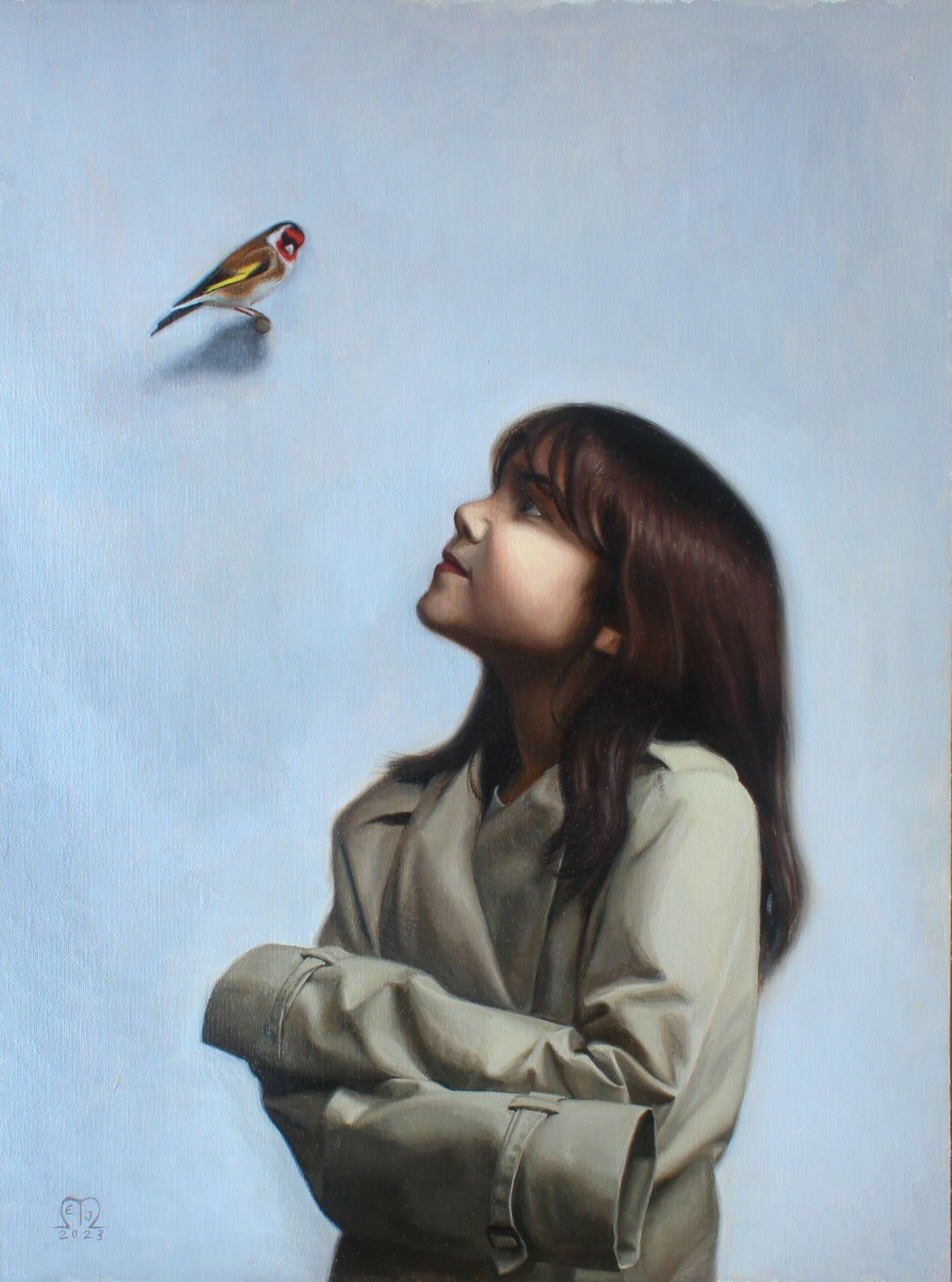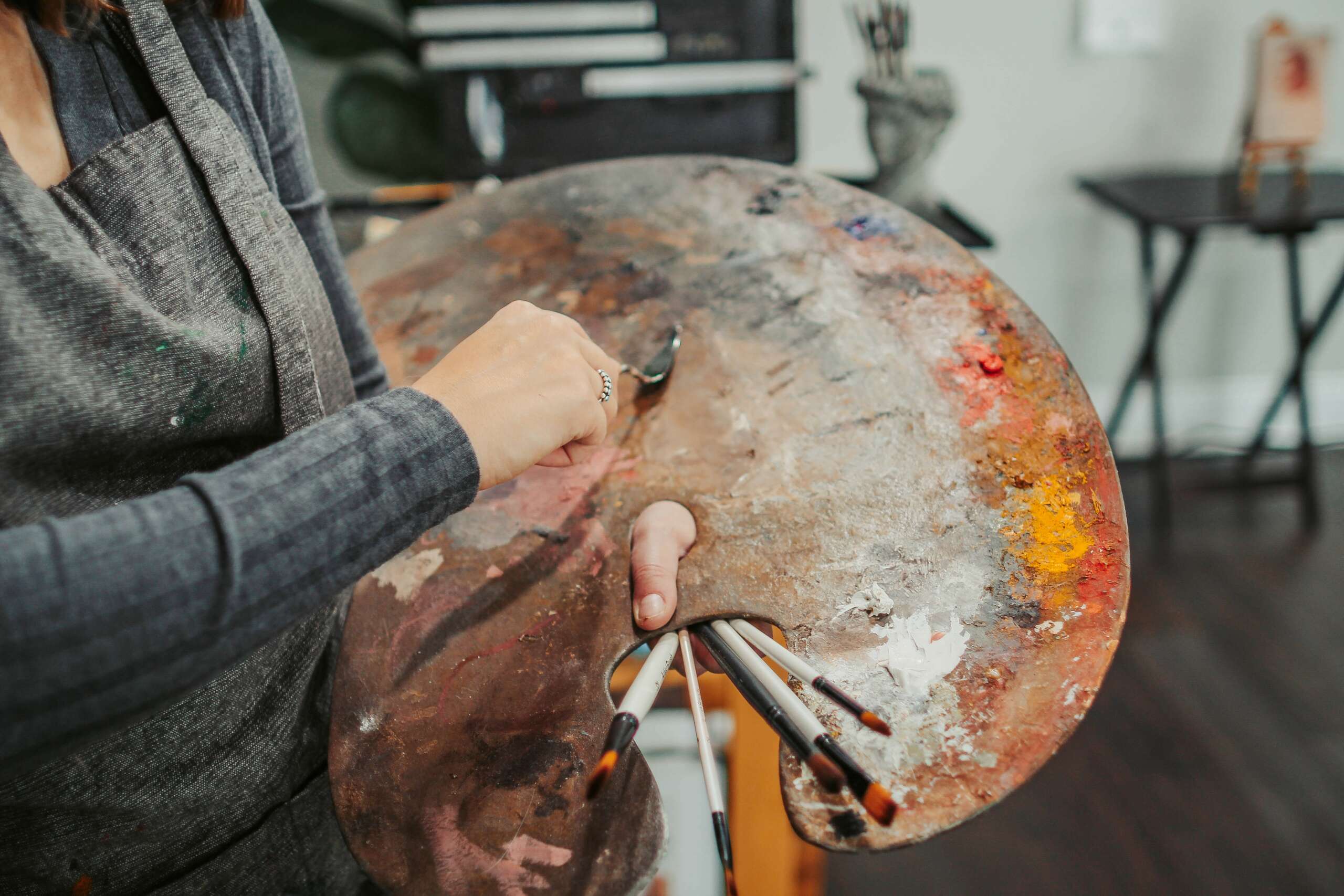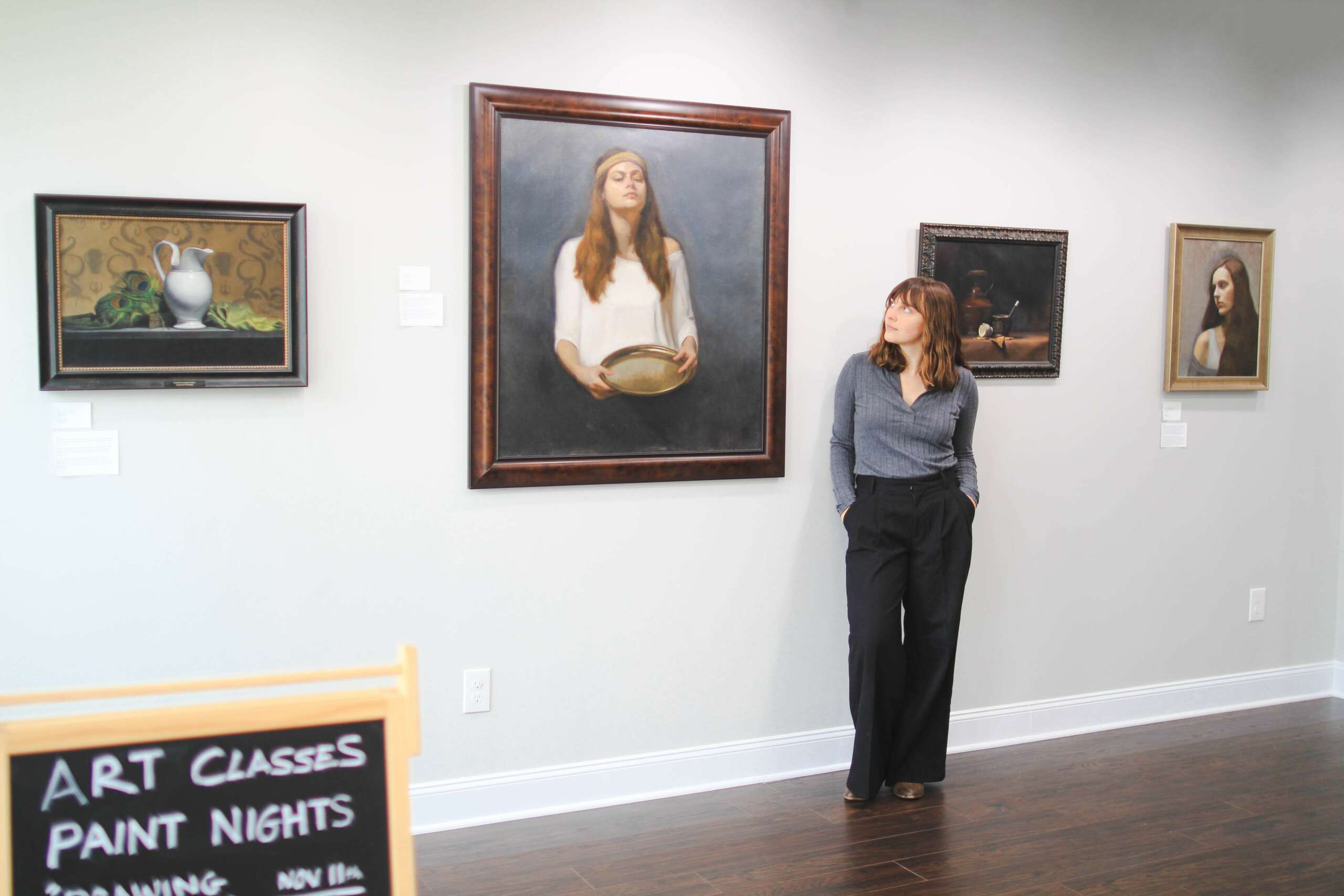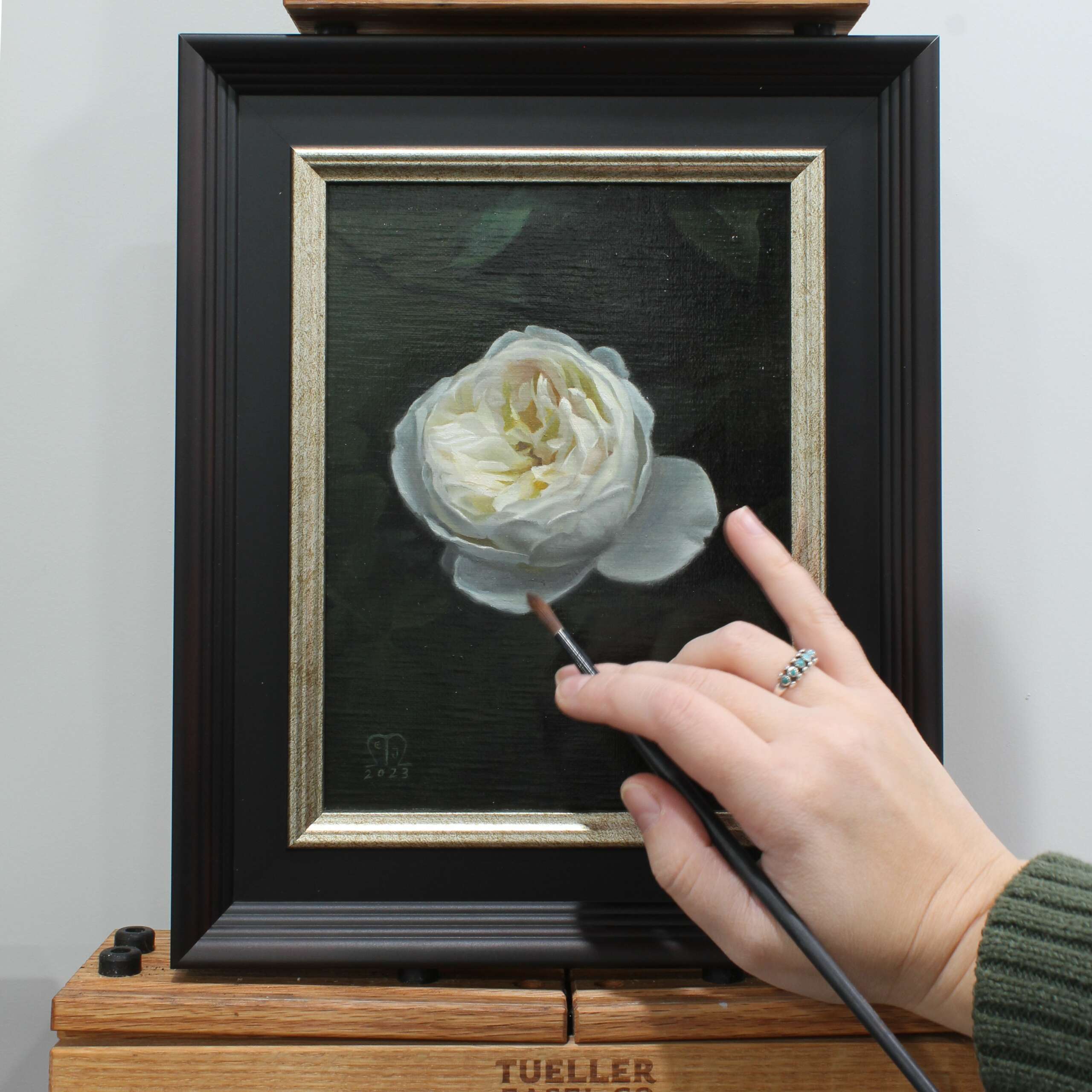We caught up with the brilliant and insightful Eliza Moser a few weeks ago and have shared our conversation below.
Eliza, thanks for taking the time to share your stories with us today What did your parents do right and how has that impacted you in your life and career?
My parents were always very supportive of my desire to be an artist, but beyond that, they modeled habits that would set me up for success. While it is very fortunate that so many parents these days are supportive of their children’s desires to be artists, I think I was very fortunate to have parents who knew first-hand what that looks like on a day-to-day basis.
My dad has, for my entire life, supported his family as a full-time musician. Not only was he wholeheartedly supportive to me when, as soon as I was old enough to hold a pencil, I announced that I would be an artist, but he had practical experience to guide me into making that a viable career.
On a small level, this translated into things such as daily habits: learning how to manage my own time, learning how to set and stick to work hours for myself, and seeing how an embrace of structure and habit actually aids the creative process, rather than restricting it. Professional artists are people who live on the edge between structure and creative freedom, and it is important that we don’t neglect one side or the other. And this neglect of the business side of art is where I think so many creatives unfortunately struggle in their careers.


Awesome – so before we get into the rest of our questions, can you briefly introduce yourself to our readers.
I am a 28-year-old oil painter, art instructor, and gallerist, originally from Springfield, MA. I have been in the fine arts since I was 14, and I opened my own art studio and gallery this past fall in September, 2023.
As long as I can remember I had the goal of being an artist. I was very drawn to the old masters, with a particular fondness for Vermeer, Michelangelo, and Rembrandt (stereotypical, I know, but it’s the truth.) While they might be considered old fashioned, to me there was a real magic in their realism. which I sought to emulate.
When I was only 14, I was introduced to the craft of classical realist painting and drawing by artist Christina Mastrangelo, who had recently returned from her studies in Florence, Italy. Christina recognized my dedication and encouraged me to continue my education. So, at the age of 19, I departed for Italy and enrolled at the Florence Academy of Art, where I immersed myself with the traditions of the old masters and dedicated myself to learning their craft.
The methods used in these schools are not for the faint of heart: the curriculum was rigorous, designed to train my eye to see like an artist sees. All day we painted standing up, working only from life, and using natural light.
While the program was strenuous, I am grateful, because it pushed me to be a stronger painter. When I graduated in 2017, my painting “Terracotta and Green” received the award “Best Still Life of the Year”.
After graduation, at only 22 years old, I set out to create a career for myself as a full-time artist. Alongside selling my original artwork and taking portrait commissions, I discovered a love for teaching; students are passionately curious about art, and that enthusiasm is infectious to be around. I began teaching classes and workshops in traditional oil painting and drawing at various locations in Western MA. During this time, I continued to exhibit my own work in various exhibitions, including the several of the Academic Artist Association’s national exhibitions, and the Guild of Boston artist’s regional juried show in 2018 and 2023.
In the fall of 2023, I opened my own art studio and gallery called “Eliza Moser Fine Art” in the town of South Hadley, MA. I wanted to create a space dedicated to fine art, and which blurs the lines between Gallery, Art School, and Art Studio. In the mornings and evenings I teach classes and workshops in fine art; during the day, the space is a fine art gallery, where people can stop in and view the works on display.
Because the space is also functions as my art studio, visitors can also view works-in-progress on my easel and gain a sneak-peek into the artistic process. A big part of my mission with this choice was to encourage creativity in others by being transparent about the artistic process; very often, we only see a painting when it is finished and framed. But the truth is, a painting will go through many ugly and awkward stages before something beautiful emerges. In my experience as a teacher, I had seen countless students abandon projects because of these ugly stages, or out of fear of making a mistake. If I have learned anything so far as an artist, it is that you cannot fear making mistakes. I hope that by putting every stage of a painting, warts-and-all, on display for everyone to see, I can encourage my students to bring resilience to their own creative work.



We often hear about learning lessons – but just as important is unlearning lessons. Have you ever had to unlearn a lesson?
As long as I can remember, I’ve been a perfectionist. As a realist painter, a critical eye is necessary. You must train yourself to recreate shapes with accuracy, to spot discrepancies between your subject and your work, and to always be on the lookout for mistakes. This constant self-critiquing is one of the most difficult parts of realist art.
My art education was a rigorous one, and I started at a very young age; while I am grateful for both of these things for pushing my artistic abilities beyond what I thought possible, the toll it took on my creativity isn’t lost on me. For the first few years of making my own work, I was frozen by perfectionism, fear of making work that wasn’t good or “accurate” enough. Over the years in my experience as a teacher, I’ve seen many students frozen by that same fear.
Now I understand that “accuracy” is not the same as “mastery”– that a painting has a life of its own, beyond its source material. And that ugly stages of the painting are not something to be feared, they are simply a necessary part of the painting process. And this is a sentiment I remind my students (and sometimes, myself) every day.



Do you think there is something that non-creatives might struggle to understand about your journey as a creative? Maybe you can shed some light?
I think the hardest thing for non-creatives to wrap their minds around is the concept that being an artist is in many ways a job just like any other. When someone new asks me what I do for work, and I say “I’m an artist”, their follow up question is usually along the lines of “…but how exactly does that work?” My answer is that, while there are unique aspects of being a creative to be sure, the majority of it is the same as any other job. You work certain hours, you have plenty of the same monotonous tasks of a day-job such as emails and marketing and accounting, but the main difference is you need the discipline to set your schedule yourself.
My father is a musician, so I grew up witnessing a parent go to work every single day on his music with the same routine of a person with an office job. I think seeing a professional artist take their craft and themselves seriously like this had a profound effect on the way I approach my own business– you can’t sit around idly, waiting for inspiration to strike. You have to set work hours for yourself, do the work even when you don’t feel like it, and trust that the inspiration will come.
Contact Info:
- Website: www.elizamoser.com
- Instagram: @elizamoserfineart
- Facebook: Eliza Moser Fine Art
Image Credits
Joline Seymour Photography


